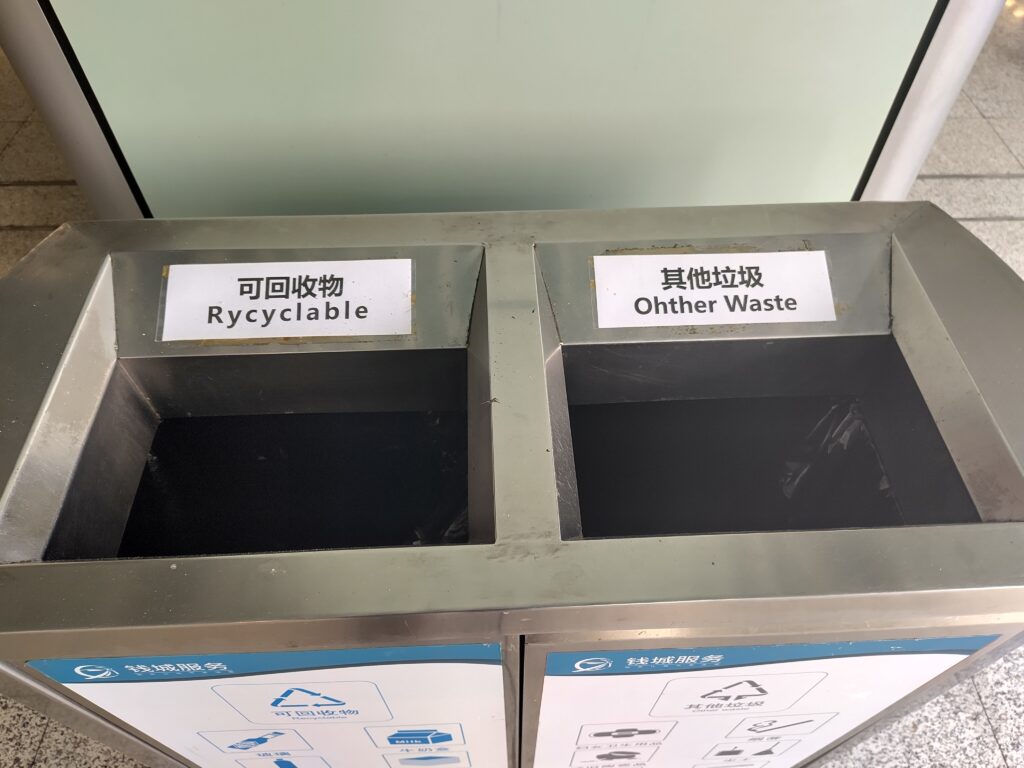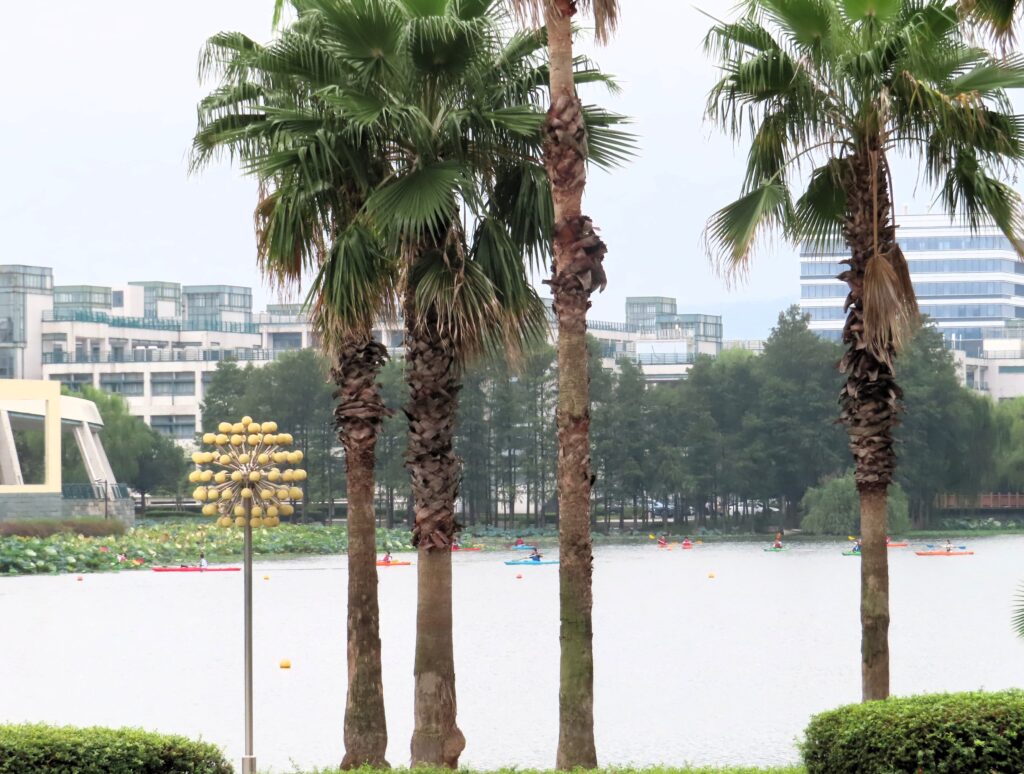
The night was short, although it had started promisingly, as I was alone in the room until midnight. But then, between midnight and 1:30 a.m., the door opened several times, sometimes for no apparent reason, sometimes it seemed as if someone was moving in. All in all, it was too loud, and every time I thought I could try to sleep, the next “attack” came.



We met at 10 a.m. at the south gate of the Zhejiang University campus (once ranked is the ugliest gate of all Chinese universities, or so). I’m not sure what vocabulary I’ve already used to describe a Chinese campus—big, huge, vast? I’d need a different one. It’s a total of 4 km² (bigger than the complete inner city of Vienna), a bunch of skyscrapers just for the professors, etc., etc.
In addition to the enormous infrastructure, it’s a beautiful park with quiet corners. We enjoyed this area, and then Han and Peter also showed me some buildings that played a role during their time studying there. There are so-called “booths” where student groups can develop their skills or pursue their hobbies. We had lunch in one of the large cafeterias, but then it was time to leave—Han and Peter had to catch their train to Beijing (where we’ll see each other again), and I continued on to Shanghai (you know: Zotter, but also some places Han had originally designed as part of a joint tour).
I got to the train station early enough to correct a mistake I’d made:
Since the station also houses the entrance to the subway, which I’ve used several times now, I’d gotten used to this part of the station. Only after checking each entrance to the platforms and looking for my train number did I realize these weren’t entrances, but exits, as this floor was for arrivals. I think in most Chinese train stations, arrivals and departures are on separate floors, as I might have remembered from my first train from Urumqi to Chengdu. The departure halls usually have separate entrances to the platforms and waiting areas on opposite sides: one for the front of the train (e.g., 1-8) and one for the rear of the train (say, 9-16). Depending on the train (either starting from there or arriving from another city), boarding begins 30 minutes or less before the train’s departure. People line up very early to rush to the platform, although they have booked seats.

Usually, there are markers indicating where each car stops, sometimes even indicating which entrance is closer to which seat number. This time, there were three car markers in three different colors, but I couldn’t figure out how they correspond to the different trains. Anyway, this time all indications didn’t fit to my coach. Han explained to me that those colours normally correspond to colours of the train indication on the screens.
Arriving in Shanghai, as a now experienced subway passenger and with the help of amap, I was able to easily find the hostel.’
I’m currently sharing a room with a young Egyptian who, minus the travel time, is only in Shanghai for four days in China. I think that’s pretty brave.